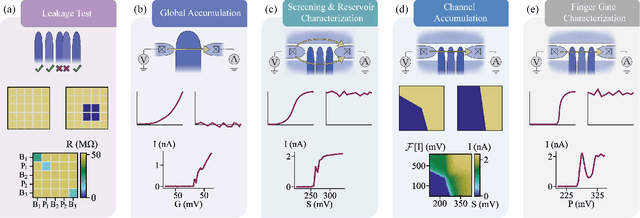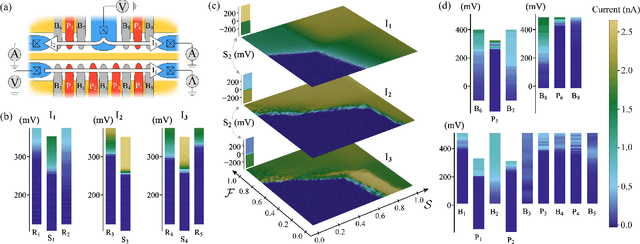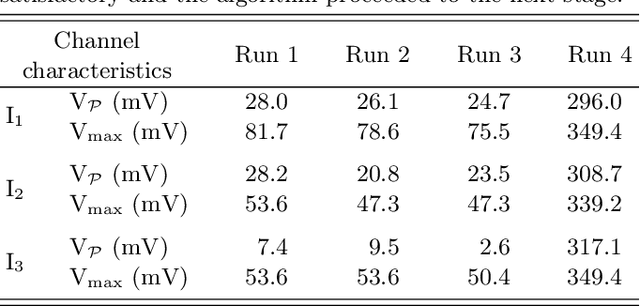Jared Benson
BATIS: Bootstrapping, Autonomous Testing, and Initialization System for Quantum Dot Devices
Dec 10, 2024



Abstract:Semiconductor quantum dot (QD) devices have become central to advancements in spin-based quantum computing. As the complexity of QD devices grows, manual tuning becomes increasingly infeasible, necessitating robust and scalable autotuning solutions. Tuning large arrays of QD qubits depends on efficient choices of automated protocols. Here, we introduce a bootstrapping, autonomous testing, and initialization system (BATIS), an automated framework designed to streamline QD device testing and initialization. BATIS navigates high-dimensional gate voltage spaces, automating essential steps such as leakage testing and gate characterization. The current channel formation protocol follows a novel and scalable approach that requires a single measurement regardless of the number of channels. Demonstrated at 1.3 K on a quad-QD Si/Si$_x$Ge$_{1-x}$ device, BATIS eliminates the need for deep cryogenic environments during initial device diagnostics, significantly enhancing scalability and reducing setup times. By requiring minimal prior knowledge of the device architecture, BATIS represents a platform-agnostic solution, adaptable to various QD systems, which bridges a critical gap in QD autotuning.
Explainable Classification Techniques for Quantum Dot Device Measurements
Feb 23, 2024



Abstract:In the physical sciences, there is an increased need for robust feature representations of image data: image acquisition, in the generalized sense of two-dimensional data, is now widespread across a large number of fields, including quantum information science, which we consider here. While traditional image features are widely utilized in such cases, their use is rapidly being supplanted by Neural Network-based techniques that often sacrifice explainability in exchange for high accuracy. To ameliorate this trade-off, we propose a synthetic data-based technique that results in explainable features. We show, using Explainable Boosting Machines (EBMs), that this method offers superior explainability without sacrificing accuracy. Specifically, we show that there is a meaningful benefit to this technique in the context of quantum dot tuning, where human intervention is necessary at the current stage of development.
* 5 pages, 3 figures
Data Needs and Challenges of Quantum Dot Devices Automation: Workshop Report
Dec 21, 2023Abstract:Gate-defined quantum dots are a promising candidate system to realize scalable, coupled qubit systems and serve as a fundamental building block for quantum computers. However, present-day quantum dot devices suffer from imperfections that must be accounted for, which hinders the characterization, tuning, and operation process. Moreover, with an increasing number of quantum dot qubits, the relevant parameter space grows sufficiently to make heuristic control infeasible. Thus, it is imperative that reliable and scalable autonomous tuning approaches are developed. In this report, we outline current challenges in automating quantum dot device tuning and operation with a particular focus on datasets, benchmarking, and standardization. We also present ideas put forward by the quantum dot community on how to overcome them.
 Add to Chrome
Add to Chrome Add to Firefox
Add to Firefox Add to Edge
Add to Edge